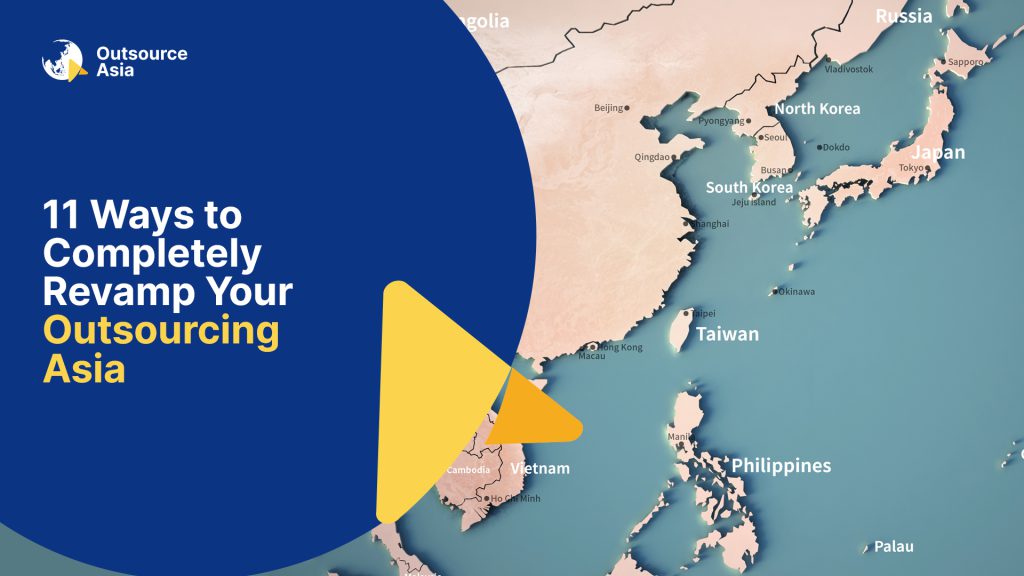
11 Ways to Completely Revamp Your Outsourcing
There has been a boom in outsourcing of call centers, help desks, testing, development, projects, and entire IT infrastructures in recent years. Outsourcing certainly seems to be the way to go.
What do you need to know before jumping onto the outsourcing bandwagon? Are there any steps you can take to make sure things run smoothly?
You’re probably aware of the huge risks involved with outsourcing if you’re a business owner or manager. You should be if you aren’t already. Putting your business’s future in the hands of strangers can quickly go awry.
You may be hesitant to hire staff you will never meet face-to-face, but you have never had a better chance than now to leverage online outsourcing, especially once you know how to avoid some of the more common pitfalls.
Here are our 11 tips to completely revamp how you outsource. Hopefully, these tips will save you time and energy while preventing you from making mistakes that could ruin your efforts.
1. Everything should be written down
You won’t have much face-to-face contact with those you’re hiring when outsourcing. As a result, it can be difficult to communicate clearly. Telephone meetings can bridge the gap created by long-distance working, but they aren’t the best way to convey important information. Too often, technical problems get in the way, and you don’t know whether the person you’re speaking with is in a calm or distracting environment.
Written communication, such as memos or e-mails, leaves a clear record behind. It is best to communicate anything you want your team to remember or refer back to in writing. Building relationships face-to-face is excellent, but feedback, guidelines, procedure manuals, and expectations should always be written down.
2. Transparency is key
It’s important to put transparency practices into place since outsourced work, by definition, takes place out of your sight. Meet regularly – once a week, once a month, or whenever is convenient for your partnership – to discuss key aspects of your business. A face-to-face meeting or video chat will help avoid delays, setbacks, or misunderstandings and keep both parties informed. Send a memo summarizing the main points of the discussion afterward.
3. Choosing the right activities to outsource
Choosing which activities to outsource is one of the most important decisions in outsourcing. Make sure your company doesn’t lose its competitive advantage. Maintain control over aspects of your business that make you unique. You shouldn’t outsource an area where you’re already a leader in price or service. In order to effectively manage an element, it’s important not to change the things customers value most in your business.
Outsourcing isn’t always the answer to increased demand. You can ask freelance agents if they’d be willing to take on more work if you already outsource some. You may have extra staff or time to complete a new project in some area of your business. You’ll save time by working with someone you already know who is performing well.
Do not outsource any areas of your business that will directly affect your customers. Small businesses or companies in transitory stages cannot afford to hire vendors for customer service, customer feedback tool or sales, even though some companies do well with it.
When the demand for a part of your business exceeds your staff or resources, outsourcing makes sense. Do some departments complain they don’t have time to keep up with everything? Outsourcing this element of your business can reduce stress and help you meet customer needs.
4. Clearly define your objectives
Communication is essential when it comes to your goals and expectations, even if you want your team to work well independently. If you want your outsourcing project to be successful, you must clearly communicate what you need and describe your vendor’s or employee’s role. Explain the project’s metrics, quality expectations, scope, and deadlines in detail and in detail.
Prepare a scale to evaluate the project’s components based on what is most important. Playing ‘mystery shopper’ may be a useful method of monitoring quality in some situations. Consistently track all aspects of quality monitoring.
It is your responsibility to communicate that feedback directly to your team, regardless of whether they are meeting their goals or not. If you focus on both the positives and the negatives, they’ll appreciate your approach. It is useless to receive a failing report, but getting suggestions on how to improve can be valuable.
5. Establish a solid contract
When dealing with a service provider, this is especially important. There are two ways in which your contract determines the dynamics of your partnership. A contract establishes expectations at the outset of a relationship, and serves as a reference document in the future.
Specifics about payment, creative and other rights, expectations and roles should be outlined in a contract, along with an exit strategy. Any contract you sign should be reviewed by a lawyer.
A contract should give you the option of terminating the vendor’s agreement if they fail to meet your established quality expectations. If this isn’t possible, at least set a date when the contract will be up for renewal so you can decide whether to renew it.
6. Be sure to consider all outsourcing costs
It is extremely uncommon for actual and projected savings to match, despite the fact that companies often outsource in order to save money. Because of adjustments, time loss, and other factors, plan to save approximately three quarters of your projected amount during the first several months of a partnership.
At first, you might not think about the costs of starting an outsourcing relationship. It takes time to choose the right vendor, and there may be fees associated with networking websites and other sources. In some cases, the process of negotiating and drafting a contract may incur legal fees, and maintaining the relationship may require time or travel costs.
7. Don’t rush
Choosing the right vendor or worker for your needs will take time, so resist the urge to hire the first party you contact. Take the time to compare their strengths with those of other providers, even if they end up being the right choice. Spend time shopping around on outsourcing websites as well. Ensure the company you choose specializes in what you need – their strengths should align with yours.
It is important to consider many factors when choosing a business partner. In addition to a quality product and a good price, there are other factors to consider. During the time the provider has been in business, has it consistently improved? How well-established are they in their field? Consider experience, location, flexibility, tax laws, as well as language and cultural barriers.
8. Eliminate low bidders
Despite the temptation to save money, as the saying goes, you get what you pay for. You don’t have to hire the most expensive candidate, but a worker’s pay is often determined by their education, experience, and quality of work.
You don’t have to splurge, but you shouldn’t skimp too much either.
9. Be the owner of your website
You probably already have an online presence if you’re considering outsourcing. Make sure people can always find you on your own website since it is the foundation of your online presence.
One of the most potentially disastrous mistakes is letting your domain be controlled by a supplier. In the event that another person owns (or registers) your domain name, the programmers, designers, or even the software that runs the site will be able to take down your site. Utilize a service such as www.whois.net to verify you are the owner, and ensure you have registrar control – find out who currently has registrar access and ensure your name is included. You should never give a programmer access to your registry. Through registry support or by scheduling a team viewer session with the programmer, you can easily coordinate even the most complex changes.
10. Carefully manage current personnel
As soon as your employees learn your company plans to outsource, they can’t help but feel nervous. There is a concern that they may be offended or hurt, as well as wondering if they will be affected. You may feel that your decision reflects on the capabilities of your employees. After decisions have been made, it is best to be upfront with all staff and partners. You will be able to establish trust with your employees and eliminate fear and rumors as a result.
In some transitions, your staff may begin working for your new partner in whole or in part. Communicate with the employee so they understand what to expect, and make sure their loyalty is maintained during this transition. You should also identify key employees in areas that will be outsourced and recruit them to other departments during this time.
It is possible to facilitate a smooth transition even if personnel will be replaced by the outsourcing vendor. Make sure employees know they are valued and treated with respect. It is possible for staff to transfer to other departments within the company at times. Providing training opportunities for employees will give them an advantage in the job market if not.
Current staff should never be asked to train their replacements. It is in poor taste, and their emotional response will not result in proper training. Severance packages help entice employees to stay until a cutoff date by rewarding those who stay. Depending on years of service and pay, these benefits may include health benefits and may be paid in a lump sum or over several months.
11. Remember the end goal
You should end your outsourcing partnerships gradually and on mutual terms, as all good things must come to an end. If a vendor goes out of business or demand increases drastically, it’s best to be prepared for the worst.
Make a plan that you can implement tomorrow if necessary. Does another area of your business have the capacity to handle the workload? Have you interviewed and are comfortable with a similar provider? Even though you hope for a smooth transition in advance, planning for just-in-case is the best course of action.
Outsourcing can help your company grow in a number of important ways when you’re well-prepared. Your strengths can be leveraged and you can find ways to work more efficiently. However, mistakes can also be fatal during this period.
Outsourcing is all about increasing productivity, quality, and savings, isn’t it? By avoiding the pitfalls on this list, you’ll gain all these advantages – and more.
What criteria do you employ to choose the perfect outsourcing partner? If you need help in finding the right outsourcing partner, book a FREE APPOINTMENT with Outsource Asia experts today.


